THE STREET BIKE I grew up with photos of grand prix motorcycles covering my walls. Mostly 500cc two-stroke NSR Hondas, and mostly painted in Rothman's or Repsol colors. Eventually I watched Mighty Mick Doohan's dynasty come to an end, and Valentino Rossi's begin soon after. I watched Rossi dominate the field on the radical, five-cylinder RC211V, then Nicky Hayden salvage the world title against the odds, and now the genius of Marc Marquez take the globe by storm.
What never changed was my infatuation with the machines. I love that they are cutting edge, insanely powerful, and ultra rare. In particular, I love that we never know just how cutting edge or powerful they are. Being competition prototypes the companies are under no obligation to say how the valve trains work, exactly, or how much horsepower they really produce. Not knowing adds to the mystique.
And so it was with a bit of apprehension that I swung a leg over Honda's new RC213V-S. Was I worthy of this $184,000 slice of MotoGP history, or the opportunity to ride it at the Circuit Ricardo Tormo in Valencia? No, of course I'm not worthy of it. But I tried not to let that—or the deep and obvious concern in the eyes of the Honda Racing Corporation engineers—get to me as the RCV-S grumbled out of pit lane.
My first experience of the Valencia circuit was on the European-spec streetbike, with lights and blinkers in place and just under 160 horsepower (claimed) at the crank. Before hitting second gear the ultra-aggressive rider triangle was apparent. The clip-ons are at about the same height as the tall, thinly padded seat, putting lots of weight forward on the grips. Footpegs feel high, too, as you would expect from race-derived ergonomics, but at 6-foot-2 there was plenty of room for my legs. A TTX36 shock and gas-charged TTX25 fork suspend the RCV-S, and even on the glassy smooth track the suspension feels stiff.
Even with less power on tap than a current literbike I eased into using the engine’s potential, wary of the pedigree alone. Overall acceleration on the straights was not particularly impressive (the rev limiter cut in abruptly at around 12,200 rpm) compared to a BMW S1000RR or Aprilia RSV4, but low-end and midrange thrust is instantaneous. After a couple of laps I fed enough power to the ground that the DOT-spec Bridgestone RS10 rear tire started to squirm exiting corners, and it felt like I was hardly opening the throttle. An orange “T” light on the dash was illuminating to tell me the Honda Selectable Torque Control (read: traction control) was working, then set to level 5 of 9.
With a few laps under my belt I could experiment with entering corners faster and faster, and this is where the RCV-S really shines. The transmission is one area where the S differs greatly from the MotoGP machine, utilizing a standard gearbox rather than the state-of-the-art seamless system fitted to Marquez and Pedrosa’s bikes—there’s no auto-blip downshift either. What the RCV-S does have is a sophisticated engine braking system (adjustable four ways) that cracks the throttle plates open during deceleration at high rpm, and slowly closes them as the revs drop. The result is ultra smooth deceleration, even if your downshifts are clumsy and poorly timed. It doesn’t hurt that the transmission is insanely easy to use, with short throws and extremely precise feedback.
The brakes are also predictably amazing. Massive Brembo calipers squeeze 320mm discs, and because the bike is so light (415 pounds wet, claimed) even in street trim, it sheds speed incredibly well. When the corner does arrive, any misjudged line is easily fixed with light steering and loads of feedback from the perfectly balanced front end. The street-limited Euro-spec RCV-S didn’t light my hair on fire with acceleration, but it is without a doubt the most precise and direct motorcycle I have ever ridden. There is simply no way to feel as connected to every piece of a machine than to slice through a set of corners on an RC213V-S.
THE TECHNOLOGY AND PHILOSOPHY And that, not coincidentally, is exactly what Honda was aiming to accomplish. In presenting the RCV-S to the media, Honda engineers and project leaders stressed that horsepower was not the goal, but rather constantly repeated that the basis of the project was to create, "the world's easiest machine to maneuver." In other words the best handling bike ever, not the fastest.
In doing so there are a handful of firsts for Honda sportbikes, things that interestingly Honda did not emphasize or even discuss in the RCV-S media presentation. For example the quickshifter is an item that has appeared on countless motorcycles to date but never a Honda. A full-color dash, with a bar tachometer reaching across the top and adjustable for which information is displayed, is also not new to the industry but new to Big Red. (The fob-type key actually has been used on a Forza scooter, but don't tell any RC213V-S owners that!)
Most notable of the new technology is the advent of ride modes, which can be tailored individually to set the nine-setting traction control, four-way adjustable engine braking, and three power modes to suit your style. Power modes are regulated via the ride-by-wire system and offer linear changes in power and torque outputs—P1 is the most aggressive with the most power, P3 the least. Honda didn’t provide claimed numbers for each mode, probably because output is different between bikes shipped to Europe, Japan, Australia, and the States.
Five years ago, the HSTC system controlling traction would have been revolutionary. Anymore, lots of bikes work like this. A Bosch Inertial Measurement Unit detects each of the machine’s movements, from roll characteristics to lateral acceleration, and communicates the information to the ECU. The IMU information is combined with front and rear wheel-speed data to mitigate the torque that is allowed to the contact patch. Basic stuff these days (though there is no ABS). However, Honda says that the RCV-S system is especially sensitive to vehicle roll and position detection due to technology developed for the company’s ASIMO robot project. Nifty.
But really, it’s all of the stuff besides the electronics that make the RCV-S such a stunning motorcycle. Mass centralization techniques used on the RCV MotoGP racer are translated directly to the S. Things like the fuel cell residing mostly under the seat, to carry the weight of the gasoline as low as possible. Because of that, the bottom of the tank is just above the top of the swingarm, which is why the swingarm bracing structure is triangulated down rather than up. This isn’t a swingarm sort of like the RC213V racer, it’s the same swingarm. That design, along with the plethora of other strategies and techniques that Honda Racing Corporation has learned over the nearly 15 years of four-stroke MotoGP racing is essentially all wrapped up in the RCV-S chassis, and it feels like it.
For 160 horsepower or the 101 claimed ponies that the US-spec model is putting out, all of the technology might seem like overkill. It’s riding the RC213V-S with the optional—an option everywhere outside the States, that is—Sports Kit installed that puts it all into perspective. With around 215 horsepower (claimed) at the crank, suddenly advanced TC with wheelie control, silky smooth engine braking, and ultra high-end componentry seem borderline necessary.
The afternoon of my ride day consisted of two sessions aboard the kitted bike, upgraded with too many options to list, but here’s the juicy stuff. A new ECU changes fuel mapping to correct for more power, created by the ram-air ducts that replace the headlights, new spark plugs, and the circuit-only exhaust. (The new ECU also includes a launch mode, and more adjustability for Engine Braking modes.) The shift pattern can be changed to GP style, that’s one up and five down, and hardware is provided to change rear suspension ride height. There are also more aggressive brake pads, a sprocket set, a thermostat that allows the engine to run 20 degrees cooler, and a GPS unit for data logging.
THE RACE BIKE Riding the bike in street trim it feels special, no question. It handles wonderfully, and feels more precise in every command than anything I've ever ridden. But it's also quiet, and relatively tame—surely the 9,400 rpm-limited, 101 hp American version will feel even more pacified. However, the RCV-S with Sports Kit installed is a completely different experience. First of all, it sounds vicious. It's loud, raspy, and gives the impression that it will make no compromises for you the rider.
I was intimidated. Just like the street bike, though, it was incredibly easy to ride. The throttle response is quick, fueling is perfect, the dry clutch is light and accurate, and the transmission is the new gold standard. In kitted trim the RCV-S is 25 pounds lighter (half of that is the race exhaust with catalyzers removed) but it felt more like 50 pounds less than in standard form. Part of that was probably due to the Bridgestone Battlax V02 slick rubber mounted to the kitted bike, a definite upgrade in traction from the Bridgestone RS10 street tires.
With slicks, more aggressive brake pads, and around 215 horsepower at the ready I have to say I have never felt less adequate on a racetrack. In the press briefing the night before, lead test rider and ex-MotoGP racer Shinichi Itoh said, “Machines that win races are machines that respond to the rider’s will.” And that is exactly what it feels like. No matter how quickly I flicked from side to side, or how early I felt like I got on the gas, the machine was two steps ahead. Once up to speed I tried to engage the traction control, coming out of a first-gear corner and pouring on the gas heavily just after my knee lifted off the ground. No dice; the rear slick dug in and carried the front wheel out to the curbing, wheelie control blinking calmly and accelerating like a demonic carnival ride.
Simply put, it is the most composed, utterly capable motorcycle I have ever ridden. Trail-braking, corner exits, fast sweepers, frantic downshifts from 185 mph: I went as fast as I dared, and never once was there a wobble, shake, or misstep by the bike. It seems my first impression was correct: I am not worthy. As a side note, I learned later that Itoh-san tested the RCV-S at Valencia before the press arrived, and decided to make no changes to the suspension at all. Out of the box, from the factory, HRC-rider approved. All from a bike with a 12,000 km service interval (aside from the clutch, which Honda recommends checking clutch plates every 3,000 km).
IS IT WORTH $184,000? So, it's the most impressive motorcycle I've ever ridden. You might be mumbling to yourself that it ought to be for the better part of $200,000. And, if you live in the United States you might be appalled that the American version only has 101 hp and there is no Sports Kit available. Those are all fair feelings to have, but now that I've ridden the bike I'm starting to come around to the exorbitant price.
The truth is, I have mixed feelings about this bike being released to the public in the first place. Part of me would prefer if MotoGP bikes were only ever allowed to be ridden by MotoGP riders; it should be earned, not purchased. But, it’s not up to me. Honda has decided to crack the door open to the tune of no more than 250 units. Something tells me those owners who have the means to purchase this motorcycle confined to American shores will find a way to unlock the machine inside the U.S.-spec version. What’s 12,000 euros for the Sports Kit and shipping costs from Europe at that point?
I always knew that it would be valuable as a museum piece, a meticulously crafted piece of machinery from deep within HRC and a crown jewel of almost any collection. For the right person, and any Honda enthusiast, that’s worth the asking price. What changed my mind was feeling the potential of the machine unleashed. Lighting the fuse on a MotoGP engine (albeit without the pneumatic valves or the seamless gearbox) and soaking in the sensation of carving through a corner on a true, sub-400-pound, carbon-draped, slick-shod grand prix replica got the point across to me. There is nothing else like it.










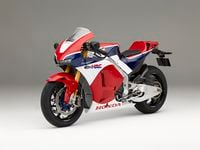








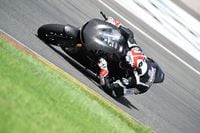







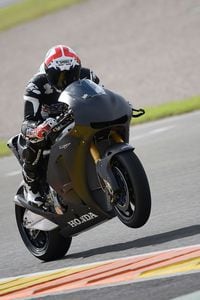


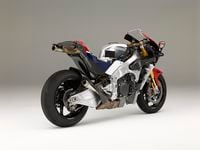





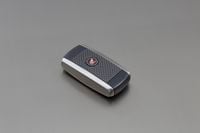
/cloudfront-us-east-1.images.arcpublishing.com/octane/2WF3SCE3NFBQXLDNJM7KMXA45E.jpg)
/cloudfront-us-east-1.images.arcpublishing.com/octane/G4MG6OUCJNBSHIS2MVVOTPX65E.jpg)
/cloudfront-us-east-1.images.arcpublishing.com/octane/IIGGWFOTOJGB7DB6DGBXCCMTDY.jpg)
/cloudfront-us-east-1.images.arcpublishing.com/octane/QSTCM6AVEZA5JJBUXNIQ3DSOF4.jpg)
/cloudfront-us-east-1.images.arcpublishing.com/octane/U4I7G625B5DMLF2DVIJDFZVV6M.jpg)
/cloudfront-us-east-1.images.arcpublishing.com/octane/B6XD6LS6IVCQPIU6HXDJSM3FHY.jpg)
/cloudfront-us-east-1.images.arcpublishing.com/octane/ICL63FEDDRDTTMINYICCEYGMDA.jpg)
/cloudfront-us-east-1.images.arcpublishing.com/octane/FCGZHQXRBZFLBAPC5SDIQLVF4I.jpg)
/cloudfront-us-east-1.images.arcpublishing.com/octane/WNOB6LDOIFFHJKPSVIWDYUGOPM.jpg)

/cloudfront-us-east-1.images.arcpublishing.com/octane/X33NU3E525ECRHXLNUJN2FTRKI.jpg)
/cloudfront-us-east-1.images.arcpublishing.com/octane/6KKT5NNL2JAVBOXMZYS5ZO76YA.jpg)
/cloudfront-us-east-1.images.arcpublishing.com/octane/J5RKG5O455GMPGQRF2OG6LRT7A.jpg)
/cloudfront-us-east-1.images.arcpublishing.com/octane/GX2CIZKQVRH2TATDM26KFG2DAE.jpg)
/cloudfront-us-east-1.images.arcpublishing.com/octane/ZWIDYSAKQZHD5BHREMQILXJCGM.jpg)
/cloudfront-us-east-1.images.arcpublishing.com/octane/CYUHJZCTSJCH3MRAQEIKXK7SCQ.jpg)
/cloudfront-us-east-1.images.arcpublishing.com/octane/LKOFINY56FCXJCANJ5M7ZDQUBY.jpg)
/cloudfront-us-east-1.images.arcpublishing.com/octane/4NBPDACMWJH63JQYJVK3QRBDZI.jpg)
/cloudfront-us-east-1.images.arcpublishing.com/octane/KKHQHRR3FJGX7H2IPU6RALMWG4.jpg)

/cloudfront-us-east-1.images.arcpublishing.com/octane/5IOFS5JAE5FOXMNA23ZRAVVYUU.jpg)
/cloudfront-us-east-1.images.arcpublishing.com/octane/CGXQ3O2VVJF7PGTYR3QICTLDLM.jpg)

/cloudfront-us-east-1.images.arcpublishing.com/octane/OQVCJOABCFC5NBEF2KIGRCV3XA.jpg)